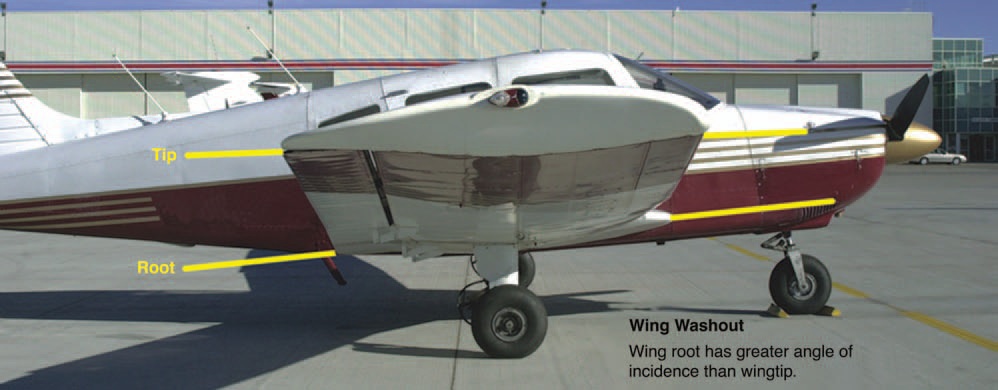
Chapter 4—Slow Flight, Stalls, and Spins
Table of Contents
Introduction
Slow Flight
Flight at Less than Cruise Airspeeds
Flight at Minimum Controllable Airspeed
Stalls
Recognition of Stalls
Fundamentals of Stall Recovery
Use of Ailerons/Rudder in Stall Recovery
Stall Characteristics
Approaches to Stalls (Imminent Stalls)—Power-On or Power-Off
Full Stalls Power-Off
Full Stalls Power-On
Secondary Stall
Accelerated Stalls
Cross-Control Stall
Elevator Trim Stall
Spins
Spin Procedures
Entry Phase
Incipient Phase
Developed Phase
Recovery Phase
Intentional Spins
Weight and Balance Requirements

USE OF AILERONS/RUDDER IN STALL RECOVERY
Different types of airplanes have different stall characteristics. Most airplanes are designed so that the wings will stall progressively outward from the wing roots (where the wing attaches to the fuselage) to the wingtips. This is the result of designing the wings in a manner that the wingtips have less angle of incidence than the wing roots. [Figure 4-4] Such a design feature causes the wingtips to have a smaller angle of attack than the wing roots during flight.

Figure 4-4. Wingtip washout.
Exceeding the critical angle of attack causes a stall; the wing roots of an airplane will exceed the critical angle before the wingtips, and the wing roots will stall first. The wings are designed in this manner so that aileron control will be available at high angles of attack (slow airspeed) and give the airplane more stable stalling characteristics.
When the airplane is in a stalled condition, the wingtips continue to provide some degree of lift, and the ailerons still have some control effect. During recovery from a stall, the return of lift begins at the tips and progresses toward the roots. Thus, the ailerons can be used to level the wings.
Using the ailerons requires finesse to avoid an aggravated stall condition. For example, if the right wing dropped during the stall and excessive aileron control were applied to the left to raise the wing, the aileron deflected downward (right wing) would produce a greater angle of attack (and drag), and possibly a more complete stall at the tip as the critical angle of attack is exceeded. The increase in drag created by the high angle of attack on that wing might cause the airplane to yaw in that direction. This adverse yaw could result in a spin unless directional control was maintained by rudder, and/or the aileron control sufficiently reduced.
Even though excessive aileron pressure may have been applied, a spin will not occur if directional (yaw) control is maintained by timely application of coordinated rudder pressure. Therefore, it is important that the rudder be used properly during both the entry and the recovery from a stall. The primary use of the rudder in stall recoveries is to counteract any tendency of the airplane to yaw or slip. The correct recovery technique would be to decrease the pitch attitude by applying forward-elevator pressure to break the stall, advancing the throttle to increase airspeed, and simultaneously maintaining directional control with coordinated use of the aileron and rudder.
PED Publication